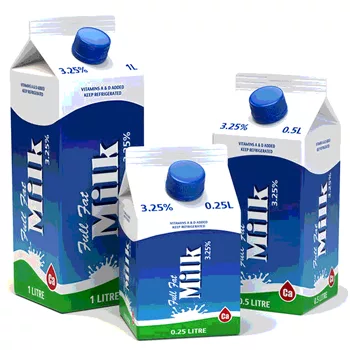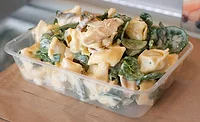Regulation (and Deregulation) of Additives for Use in Food Contact Paper in the U.S.

Science marches on, and as a result, so do the regulatory determinations made by government agencies tasked with guarding public health and safety. As analytical techniques have improved and toxicological phenomena are better understood, regulatory clearances granted by the U.S. Food and Drug Administration (FDA) years ago have come under renewed scrutiny, with the agency sometimes finding that risk assessments once deemed adequate are no longer sufficient to support a finding of “reasonable certainty of no harm,” as required by the Federal Food, Drug, and Cosmetic Act. FDA reversals of past determinations have been seen with respect to additives used in paper and paper coatings.
Understanding How Paper Is Regulated by FDA
To understand FDA’s most recent actions, some understanding is also needed of how food contact paper is regulated in the United States. First, additives for paper and paperboard that are reasonably expected to become components of food must be the subject of an applicable FDA regulation before they may be used as intended. In this regard, FDA’s primary regulations permitting the use of chemical components in paper and paperboard for food packaging are found at 21 Code of Federal Regulations (C.F.R.) Part 176 (“Indirect Food Additives: Paper and Paperboard Components”).
Within Part 176, Sections 176.170 (“Components of paper and paperboard in contact with aqueous and fatty foods”) and 176.180 (“Components of paper and paperboard in contact with dry food”) are the principle sections of FDA’s food contact paper regulations. They list substances permitted for use in food contact paper, along with compositional requirements and extractives limitations that apply to finished paper (called end-test requirements). Keep in mind that end tests apply only to already-cleared substances and are used to establish compliance with specifications in a regulation. In contrast, migration testing is conducted prior to clearance of a food contact substance to determine whether it migrates to the food and, if so, at what level.
Compliance with end-test requirements is the responsibility of the producer of a finished article; however, a packaging producer will often seek out suppliers to establish end-test compliance. Both conditions of use and food types need to be considered when conducting end tests.
Other sections within Part 176 clear specific types of substances used in the manufacture of food contact paper and paperboard. These include the following:
• Section 176.130 (“Anti-offset substances”)
• Section 176.150 (“Chelating agents used in the manufacture of paper and paperboard”)
• Section 176.200 (“Defoaming agents used in coatings”)
• Section 176.210 (“Defoaming agents used in the manufacture of paper and paperboard”)
• Section 176.300 (“Slimicides”)
In addition, there are substance-specific regulations, such as Section 176.110 (“Acrylamide-acrylic acid resins”), and a regulation setting out the criteria applicable to the production and use of recycled paper, Section 176.260 (“Pulp from reclaimed fiber”).
The Intricacies of the Regulations
As noted above, FDA food additive regulations impacting food contact paper encompass clearances both for substances used in specific types of packaging applications (e.g., Section 176.170) and for adjuvants (some of which are categorized by functions, such as defoamers). However, the specifications and/or limitations on the use of the cleared substances and end-test requirements in the regulations, along with the possible specified method of manufacture and cross-references to other regulations, can result in complex requirements when using cleared substances.
An example of the complexity of FDA regulations governing food contact paper involves Sections 176.170 and 176.180. These regulations include extensive lists of permitted additives. However, while substances included in regulations outside Sections 176.170 and 176.180 may be used in contact with fatty, aqueous or dry foods, those regulatory clearances must be broad enough to permit use in the desired paper application. For example, a substance cleared for use in an adhesive under Section 175.105 cannot be used in a paper coating under Section 176.170 by cross-reference to the Section 175.105 clearance. In addition, in most cases involving use of a substance by cross-reference, the finished paper must still comply with the relevant end-test requirements.
Care must also be taken with the use of defoamers listed under Section 176.210, which permits such substances to be used in the manufacture of paper and paperboard. A defoamer included in this regulation is not permitted for use in coatings for paper unless it is also listed under Section 176.200. This is because wet-end defoamers are not expected to be present in the finished paper product at significant levels, so that if the defoamer is used in coatings, the potential for migration of the substance to food may be much higher than contemplated by FDA when the defoamer was initially cleared for wet-end use under Section 176.200.
It may be possible to use a Section 176.210 defoamer in paper coatings, however, if one can establish that the defoamer is not a “food additive” when used as intended. This type of evaluation is based on the demonstrated or calculated potential migration of the substance to food, the resulting dietary exposure to the substance and its toxicity. For this reason, such evaluations must be conducted on a case-by-case basis.
In contrast to the example above, a defoamer cleared for use in a coating under Section 176.200 may often be used in the wet-end manufacture of paper, even though it is not specifically listed under Section 176.210. This is because many Section 176.200 defoamers used in the wet-end of the manufacturing process are not expected to be present in the finished paper product at significant levels and therefore will typically be found not available to migrate to food at significant levels. And if the defoamer does make its way into the paper, then its presence there is essentially no different than if it were used as originally cleared for a coating on a paper.
Cross-References between Regulations
As mentioned above, Sections 176.170 and 176.180, as well as other food additive regulations in Part 176, permit by cross-reference the use of substances that are the subject of other food additive regulations. Such cross-referencing is typically used with substances cleared in stand-alone regulations (e.g., polyolefins under Section 177.1520 or acrylics under Section 177.1010), provided the substance conforms to any specifications and limitations set forth in the regulation being used as the basis for the cross-reference.
The basis for using substances listed in other regulations is found in paragraph (a)(4) of Section 176.170, which permits the use of substances “that by regulation in Parts 170 through 189 may be safely used as components of the uncoated or coated food contact surface of paper and paperboard in contact with aqueous or fatty food, subject to the provisions of such regulation.” A similar cross-reference provision exists in Section 176.180(b)(1), which explicitly permits the use of any substance listed in Section 176.170, provided it is used within the limitations and specifications of its clearance in Section 176.170.
When relying on cross-references between regulations, it is important to keep in mind that the cross-referenced regulation may be narrow in scope, for example, permitting an additive to be used only with aqueous food or with a temperature limitation; therefore, it is critical to take note of the qualifying language. These limitations on use typically follow with the cross-reference.
In addition to Part 176 and other regulations mentioned above, clearances for food contact paper substances can be found in Sections 181.30 (“Prior sanctioned substances for use in paper and paperboard”) and 182.90 (“Substances considered GRAS for food contact applications”), and in FDA’s website listings of Threshold of Regulation Exemptions and Inventory of Effective Food Contact Substances (FCSs) Notifications.[1]
FCSs Notifications differ from the clearances in the regulations in that they are proprietary. In other words, they clear only the food contact substance produced by the notifier or manufacturer listed in the notification and its customers. However, this does not prevent others from submitting their own notifications to clear competitive products. When preparing a Food Contact Notification (FCN) submission, it is important to include cross-references to regulations when appropriate.
Finally, as with all substances used in food contact applications, a substance used in paper packaging for food must be of a purity suitable for its intended use. This is part of the Good Manufacturing Practices requirements in Section 174.5 (“General provisions applicable to indirect food additives”), which states that “[a]ny substance used as a component of articles that contact food shall be of a purity suitable for its intended use.” “Suitable purity” pertains to ensuring that the product does not render food deleterious or injurious to health, or impart an off-taste or odor to food.
Perfluorinated Substances in Paper Packaging
Questions about the behavior in the environment of perfluorinated chemicals (PFCs) with chain lengths of eight carbons (C8) or longer led to U.S. manufacturers agreeing to remove them from interstate commerce beginning in 2006 under the U.S. Environmental Protection Agency’s PFOA (perfluorooctanoic acid) Stewardship Program.[2] Certain perfluorinated C8-based products cleared under the FCN program were also voluntarily removed from production and import into the U.S. in 2011. This was followed by FDA publishing a final rule in 2016, amending Section 176.170 of the food additive regulations to no longer permit the use of three PFCs.
By way of background, “PFC” is a generic term that covers a group of manufactured compounds that are used in a wide range of products, such as upholstered furniture, clothing and carpets, to impart resistance to stains, grease and water. They are also widely used for the same purpose in paper packaging for food. In addition to consumer products, they are also used in the aerospace, construction and electronics industries.
Perfluorinated grease-proofing agents were first cleared in the 1960s as food contact materials for use in coating on paper wrappers and containers—such as fast-food wrappers and pet food packaging—to prevent oil and grease in the foods from leaking through the packaging. They were subsequently used in other paper and paperboard applications, such as microwave popcorn.
While U.S. manufacturers agreed to stop sales of C8 or longer PFCs, concern remained that paper produced with PFCs produced by foreign companies could end up in food packaging in the U.S. This concern led the Natural Resources Defense Council and similar groups to submit a food additive petition requesting that FDA amend Section 176.170 to no longer provide for the use of three perfluoroalkyl ethyl-containing FCSs as oil and water repellents for paper and paperboard for use in contact with aqueous and fatty foods. That petition was filed in March 2015. The three FCSs were the following:
• Diethanolamine salts of mono- and bis (1H, 1H, 2H, 2H perfluoroalkyl) phosphates where the alkyl group is even-numbered in the range C8–C18 and the salts have a fluorine content of 52.4 percent to 54.4 percent as determined on a solids basis
• Pentanoic acid, 4,4-bis [(gamma-omega-perfluoro-C8-20-alkyl)thio] derivatives, compounds with diethanolamine (CAS Reg. No. 71608-61-2)
• Perfluoroalkyl-substituted phosphate ester acids, ammonium salts formed by the reaction of 2,2-bis{[(gamma), (omega)-perfluoro C4-20 alkylthio] methyl}-1,3-propanediol, polyphosphoric acid and ammonium hydroxide
FDA granted the petition having determined that while there were no available toxicological studies conducted with the three FCSs that addressed the endpoints of reproductive or developmental toxicity, new data were available that demonstrated the toxicity of substances that are structurally similar to these compounds. FDA also cited a lack of both adequate migration data to determine dietary exposure to the FCSs from their use in contact with food and sufficient toxicology data to account for a consumer’s systemic exposure resulting from chronic dietary exposure to these FCSs. (Clearances for substances some 40 or 50 years old were based on standards and scientific studies much different from today’s.) Because FDA concluded that there was no longer a reasonable certainty of no harm for the food contact use of these FCSs, it promulgated a final rule on January 4, 2016, amending Section 176.170 to delist these three perfluoroalkyl ethyl-containing additives.[3]
Later in 2016, FDA again amended Section 176.170 to remove two more perfluoroalkyl substances.[4] However, this action was taken in response to an abandonment petition filed on behalf of 3M. FDA said that safety was not a consideration in removing these substances. It was done because 3M had established to FDA’s satisfaction that the substances were no longer being used for the regulated purpose.
Despite industry abandonment of certain PFCs in December 2016, the National Toxicology Program (NTP), part of the National Institute of Environmental Health Sciences, released a monograph[5] on immunotoxicity associated with exposure to PFOA and perfluooctanesulfonic acid (PFOS), which are both long-chain PFCs. The researchers reviewed 33 human studies, 93 animal studies and 27 in vitro/mechanistic studies in preparing the monograph. NTP concluded that both PFOS and PFOA are “presumed to be an immune hazard to humans.” This conclusion was based on a high level of evidence that PFOS and PFOA suppressed the antibody response from animal studies and a moderate level of evidence from studies in humans, explained NTP.
With the phaseout of C8 PFCs in the U.S., shorter-chain PFCs—especially C6 PFCs—have become popular replacements as a grease-proofing agent for food contact paper and board applications. FDA staff toxicologist Penelope A. Rice studied the physicochemical properties of C6 PFCs and published the results in early 2015.[6] She concluded, “Although the existing toxicological database for the C6 PFCs is, as yet, comparatively sparse, these compounds do not appear to possess the biopersistence and potent systemic and reproductive toxicity that are characteristic of C8 PFCs as a class.” She added that “data from animal and epidemiological studies indicate that C6 PFCs are rapidly and completely excreted and do not appear to accumulate in biological fluids.”
Conclusion
FDA has a long history of considering and clearing additives for use in paper and paperboard. So long, in fact, that the time has come for FDA to reassess some of these clearances based on new scientific evidence and more modern risk assessment and management techniques. To this end, we are likely to see the need to develop newer technologies for additives for paper (and other types of) packaging materials that allow food companies and FDA to meet their objectives of providing wholesome and safe food products to consumers.
George G. Misko, Esq., is a partner in the Washington, DC, office of Keller and Heckman LLP. He can be reached at misko@khlaw.com.
References
1. www.fda.gov/Food/IngredientsPackagingLabeling/PackagingFCS/ThresholdRegulationExemptions/default.htm; www.fda.gov/Food/IngredientsPackagingLabeling/PackagingFCS/Notifications/default.htm.
2. www.epa.gov/assessing-and-managing-chemicals-under-tsca/fact-sheet-20102015-pfoa-stewardship-program.
3. 81 Federal Register 5 (January 4, 2016).
4. 81 Federal Register 83,672 (November 22, 2016).
5. ntp.niehs.nih.gov/ntp/ohat/pfoa_pfos/pfoa_pfosmonograph_508.pdf.
6. link.springer.com/article/10.1007/s40572-014-0039-3/fulltext.html.
Looking for quick answers on food safety topics?
Try Ask FSM, our new smart AI search tool.
Ask FSM →








